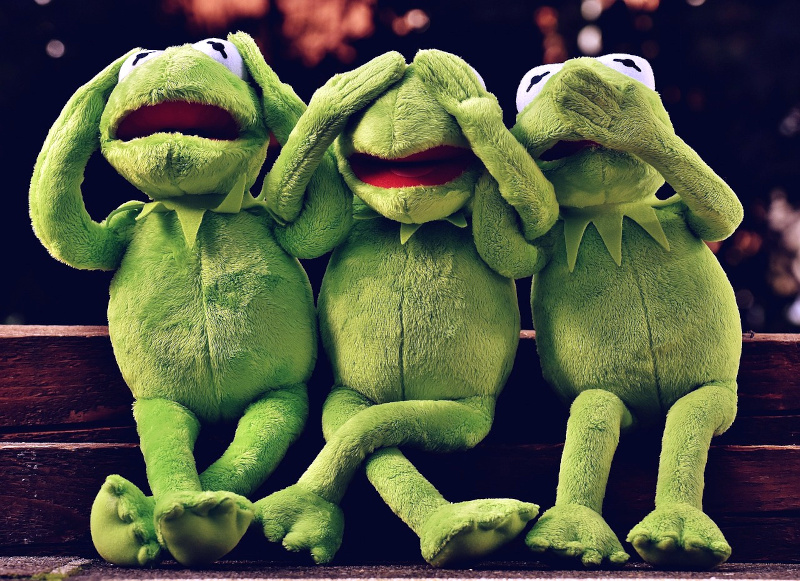A Culture of Bullying and Secrecy

For years, The O’Neal School has promised a safe and nurturing environment, but beneath the surface, many families have discovered a culture that protects aggressors, silences victims, and shelters those with power and influence from consequences.
One of the most widespread concerns is the administration’s failure to address bullying. Despite written policies in the handbooks that define and prohibit this type of behavior, parents are routinely told that their children are not being bullied, even when clear evidence is presented. Rather than punishing the aggressors, the response is often to silence or remove the victims, resulting in a concentration of bullies within the school. This has led to an environment where those who bully feel emboldened, knowing they won’t face consequences as long as they deny any misconduct.
“Bullying means unwanted, aggressive behavior that involves a real or perceived power imbalance. Bullying may also place a student in actual and reasonable fear of harm to his or her person or damage to his or her property. Bullying behavior is often repeated, or has the potential to be repeated, over time. Bullying includes intentional actions such as making threats, spreading rumors, attacking someone physically or verbally, and excluding someone from a group on purpose or any action that involves a real or perceived power imbalance.” – The O’Neal Middle School Handbook (Page 14)
We continue to receive a growing body of feedback from parents, teachers, students, staff, and community members regarding the toxic culture within The O’Neal School. Some of this feedback was highlighted in our March 2024 article “Voices of Discontent,” but additional stories and experiences shared since then echo the same disturbing themes:
Direct quotes are enclosed in quotation marks, while others have been paraphrased to protect privacy.
- “Maybe the bullying will finally end at this school, and the students will stop fighting each other. I was a student back in the 70’s, and the trauma I experienced affected me for a lifetime.”
- In 7th grade, my son faced repeated bullying and was physically assaulted, thrown down in front of both faculty and students who did nothing.
- “I’m so sorry. We had something similar happen.”
- Yes, there have been many incidents, including one involving sexual assault.
- It’s no wonder I want to leave O’Neal, the administrators never hold anyone accountable for bad behavior or dishonesty.
- What your family is dealing with reminds me of our own experience at O’Neal, particularly with the way Elmore handled the situation.
- The same pattern has occurred before—John’s predecessor, Alan Barr, was also dismissed after years of unethical behavior that went unnoticed by the board.
Recently, the school attempted to implement ineffective measures to address the bullying. These changes required students to keep a physical distance from one another, banned contact sports on the playground, and placed children—including those who have done nothing wrong—into small group counseling sessions. This strategy not only failed to address the core problem but also missed the point entirely. Teachers know who the bullies are, yet the school refuses to listen to them or take action by enforcing fair, unbiased policies. Why is that?
Many believe the root of the problem lies in deep-seated favoritism and nepotism. Certain students, especially those from influential families or who are celebrity athletes, are shielded from punishment. This kind of protection ensures that some students can act without fear of repercussions, regardless of their behavior:
- We noticed others leaving too, and it seemed that the main reason was the influence of nepotism and donor money, which significantly affected the fair treatment of students and the overall quality of education.
- “I started to send my child there, but from friends whose children attended over the years, most took their kids out. Drugs were all over the place. The ‘privileged and in-crowd’ kids got away with murder.”
- “I can tell you so much from our time there! Faculty was excellent. Admin is all about who pays the most.”
- While many dedicated people are doing good work at the school, the corrupt leadership is affecting more faculty and students as the issues spread throughout the institution.
At O’Neal, breaking the rules does not seem to be the biggest offense; speaking up about it is. Those who dare to challenge the status quo are quickly labeled as troublemakers, often threatened, shamed, or discredited for their efforts:
- I wish I could share our story, which involves emotional and physical abuse, but I’m very afraid of retaliation from the administration, even before learning about your experience.
- Those who were aware of the assault or involved were silenced under the threat of expulsion, and by the following semester, the victim was also asked to leave O’Neal.
- A middle school student recently made a threat against a teacher, and it was later discovered that the student had concerning threats on their computer aimed at the entire school. As a result, teachers, parents, and students are now afraid to speak up about the situation.
- John Elmore fostered an environment where favoritism thrives, and differing opinions, critical thinking, and better solutions are often stifled.
- The way my departure was managed, along with efforts to silence me using contractual agreements, only added to the frustration and disappointment I felt.
- After meeting with Elmore, we received the same type of letter, warning that we had one more chance before our relationship with the school would be terminated. I secretly recorded my child to capture the bullying he experienced. I completely empathize with your family, as I know how difficult it is to endure such wrongdoing.

Instead of confronting these problems, O’Neal continues to run marketing campaigns that present a glossy image to the public, as though it is some kind of fairy-tale wonderland. Videos of faculty and staff dancing, students laughing, and general school cheer create the illusion on social media that all is well, but this is nothing more than a distraction from the underlying issues.
In another striking example of disregard for a criminal assault committed on campus, the student responsible—who accepted a guilty plea in juvenile court and is now on court-ordered probation—was recently featured in a photograph on the school’s website next to an article discussing the virtues of their honor code signing ceremony. What meaning does the honor code have if its values are rarely upheld in the student body that is purportedly required to follow them?
We are not suggesting that bullying, violence, and abuse never happen at other schools—they do, and it’s an unfortunate reality that most parents are aware of. The true issue lies in how effectively schools put rules and protections in place to safeguard children from trauma, and how consistently they apply these measures when incidents occur. It’s time for O’Neal to confront the truth openly and take decisive action against the destructive culture within the school. Otherwise, the cycle will persist, and more students will continue to suffer in silence, hidden behind the school’s carefully crafted image. Or, as one community member aptly put it:
